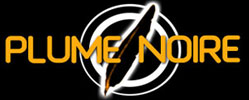
|
|
Based on a Graham Greene novel, The Third Man takes place in post-war Vienna; the city is divided into Allied zones (English, French, Russian, etc.) and carries the scars of recent combat. Joseph Cotton plays Holly Martins, an American writer who, visiting his best friend Harry Lime, discovers that he died following an accident. Martins then decides to inquire into this mysterious death and little by little though meetings he will be thrust into a troubling world where passions and betrayals call into question his own morality. Greene's story plays skillfully with the historical context and morality. The use of the city occupied by Allies creates a constant notion of chaos. At the heart of the film one finds the theme of betrayal, whether in love, friendship or moral conduct. Each character is shown in an innocent way in order to be destroyed. The Third Man is pitiless for its characters, playing the ultimate representation of the anti-hero. The not very flattering portrait of the main character could be considered a reaction against American intervention during World War II, but it also symbolizes Hollywood cinema. In The Third Man, Vienna appears as a character on her own, a kind of wounded monster that corrupts people but preserves her beauty with dignity: the architecture. The city partly in ruins lends itself perfectly to a noir novel and especially to the sublime black and white photography of Robert Krasker. Each image skillfully plays with contrast and angles to create an idea of deformity and beauty, Vienna thus being used as metaphor for the character of Harry Lime. The aesthetic approach is so thorough that each scene could be dissected in a collection of black and white photographs. Robert Krasker photographs Vienna at night and drives out the shadows and forms like Brassaï surveying Paris with his camera. The actors were all meticulously chosen, for their faces revealing their emotions through black and white and for their talent. Joseph Cotten is perfect as a decent American who slowly loses his illusions. Alida Valli (Lime's mistress) can be vulnerable along with 50's magazine cover glamour. The acting of Orson Welles is a treat from which fascination and repulsion emanate. The rest of the actors, from the major to the concierge to the count, are also salty. From a cinematic point of view, certain sequences have passed on to posterity, from the large wheel to the famous sewer chase that symbolizes the underground world that has a hand on the city. The film also probably holds the most colossal entrance in cinema, that of Orson Welles. A simple ray of light, music and a smile are enough to cause shivers. Without obviously forgetting the end, with its motionless, "accidentally long" shot. The music of Anton Karas, played on a zither, may appear monotonous to some but it is unquestionably tied to the film, contributing to the strange and lugubrious environment With an ensemble of strong elements, story, actors, photography and music, it was necessary to create an osmosis. One undoubtedly owes the success of film to the director, Carol Reed, who officiates like an orchestra conductor. The vision that the filmmaker has of the oeuvre shows through in the choice of the images, the music and the actors. Without his will to be faithful to the story, each element would perhaps not have been so meticulously controlled and the film could easily have become a demonstration of acting or a banal film noir. Like a bottle of good wine, The Third Man has matured with the age, allowing fore much better tasting.
|
|

